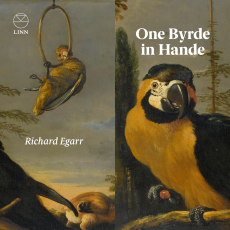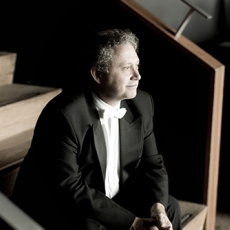Richard Egarr - One Byrde in Hande - musica Dei donum
One of the main sources of European keyboard music is the art of the English virginalists, composers of keyboard music from the decades around 1600. The common name derives from the instrument, which was so characteristic of keyboard playing in England: the virginals. It was widely disseminated, partly because it was cheaper than the harpsichord. Samuel Pepys, in his diary, mentions that during the Great Fire of London in 1661, when people were trying to rescue their furniture by boat, there was a virginal in almost one in three of them. However, this does not mean that all keyboard music was intended to be played on the virginal. As New Grove writes, the term 'virginal' was used in England "to denote all quilled keyboard instruments well into the 17th century". That is not all. There was a long tradition of secular organ playing in England, which went back at least to Tudor times. Therefore some pieces can also be played at small organs.
One of the main exponents of virginal music is William Byrd. He was one of the most revered composers of his time, despite the fact that he was of the Catholic religion, in a time when England was under the rule of the firmly protestant Elizabeth I. Byrd contributed to almost any genre of his time: sacred and secular vocal music, consort music and music for keyboard. 42 of his keyboard works are included in My Ladye Nevells Booke, which is preserved in manuscript in the British Library. Another important source of his keyboard oeuvre is the Fitzwilliam Virginal Book. Byrd was also one of the three contributors to the collection Parthenia or The Maydenhead of the first musicke that ever was printed for the Virginalls, printed at the occasion of the wedding of Elizabeth Stuart and Frederick V, Count Palatinate of the Rhine, which took place in February 1613.
All genres are represented in Byrd's keyboard oeuvre: dances, variations on popular tunes, grounds, character pieces, fantasias, preludes and, of course, pairs of pavans and galliards. Not all of them are included in the programme recorded by Richard Egarr. In his liner-notes, he writes about his fascination for Byrd's keyboard works, and his selection is very much a personal choice of some of his favourite pieces. Even so, there is quite some variety in his selection. The short preludes and longer fantasias bear witness to Byrd's mastery of counterpoint. Quite intriguing are the two pieces based on a sequence of notes, Ut re mi fa sol la, known as hexachord, and Ut mi re. It is astonishing what Byrd is able to make out of such simple themes. Bassi ostinati, known as grounds in England, were very popular across Europe, and it does not surprise that Byrd's oeuvre includes several such pieces. Transcriptions or arrangements of pieces originally intended for other scorings constitute a major part of the repertoire of English virginalists. Dowland's Lachrymae Pavan was among the favourites. Lastly, the virginalists liked to write character pieces. Egarr's programme ends with The bells, which refers to the tradition of bell-ringing at the English countryside.
Egarr decided to confine himself to the harpsichord. He plays a copy of a Ruckers of 1638. Although the booklet unfortunately does not include any details about this instrument, it seems likely that it has two manuals. It is possible that Byrd was acquainted with this kind of instruments, as Ruckers was one of the main harpsichord builders in Europe. However, such large instruments were not very common in England. From that perspective this choice is debatable. That said, I have nothing but praise for Egarr's performances. His engaging and rhythmically precise playing, together with a nice variety in his selection of pieces and the way he has put the programme together, results in a compelling recital, which is a perfect survey of William Byrd's art.

